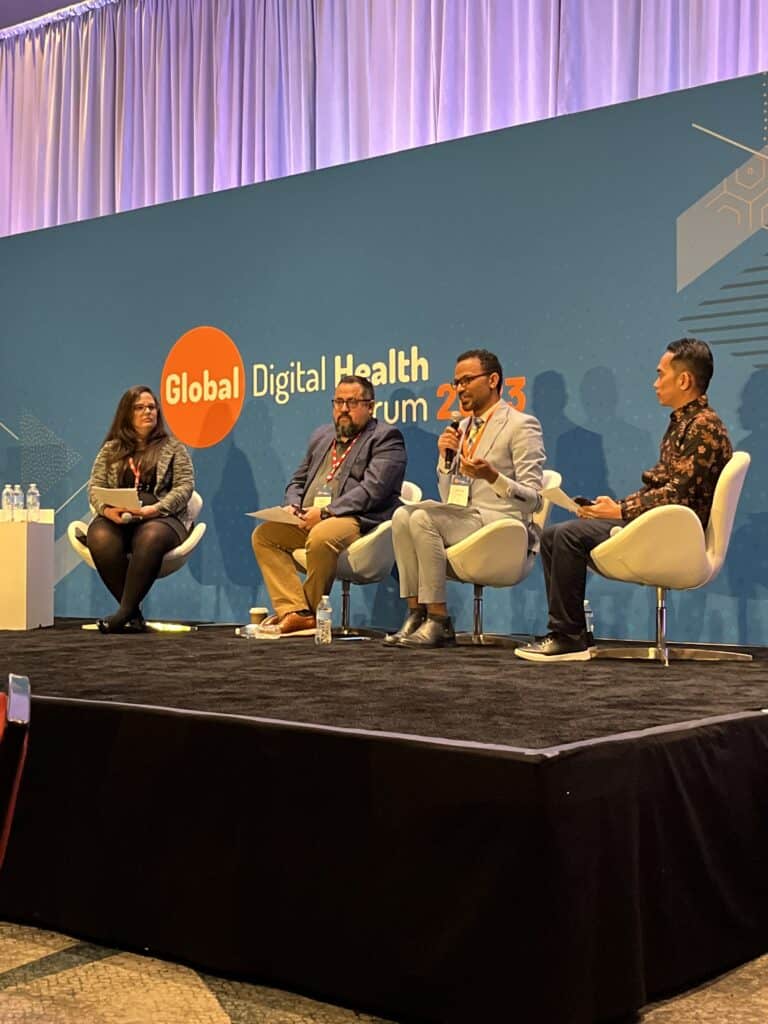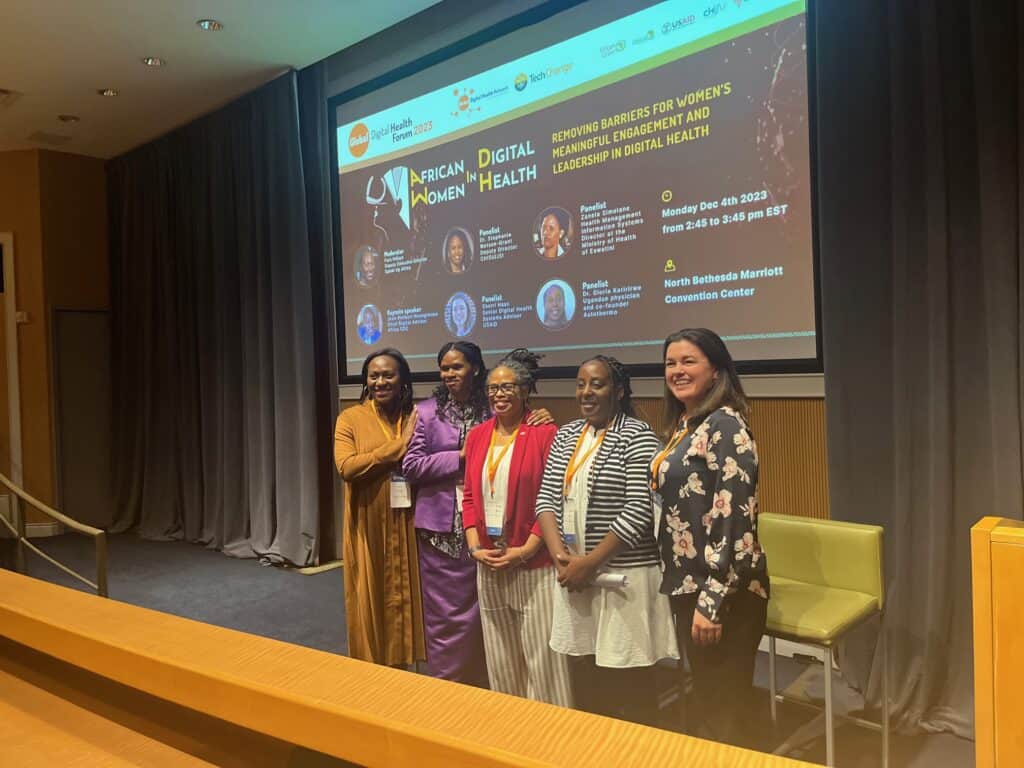Stronger Health Systems through Digital Innovation: #GDHF23 Takeaways
December 19th, 2023 | viewpoint
With better access to digital solutions to collect and make use of high-quality, actionable data, country health programs can specify opportunities and strengthen health systems to meet the needs of the communities they serve.
Recently, our JSI global colleagues convened for the 2023 Global Digital Health Forum (GDHF), to collaborate with other digital health thought leaders to advance health systems strengthening through innovation. Through these conversations, four priority areas emerged and will guide us as we continue to build innovative health systems for all.
Many people’s first encounter with the health care system is through primary health care. JSI supports the use of technology to help the government collect, analyze, and use data for primary health care program decision-making and this was a critical topic at this year’s GDHF. We are now digitizing primary health care service points (at community and facility levels) and moving from paper-based data collection tools to digital systems, where data can be easily accessed at the point of data collection as well as at subnational and national levels, through user friendly dashboards. This has already increased the availability of longitudinal patient data and improves the ability for the health system to see the entire continuum of care for clients. . Digitization has also reduced workload and created greater focus on client care, as one volunteer health worker joining virtually from Nairobi pointed out. As we’re pushing innovations further into communities through primary health care, we need to do so inclusive of gender and diversity.

Christina Villella, Daniel Otzoy-Garcia, Amanuel Biru. Taufiq Sitompul
There’s been progress in development and adaptation of solutions in health care, enabling us to transform health information systems, but we’re recognizing now more than ever the importance of an enabling environment to ensure success. In addition to key components such as governance, health workforce and standards, ICT infrastructure including connectivity and hardware are still insufficient in some areas. Tools need to work well for end users, who continue to struggle with reliable connectivity to access and share data, as well as collaborate with other parts of the health system. Further, with the variety and number of digital solutions, interoperability between systems is critical to consider. Developing national digital health blueprints alongside broadband infrastructure investment will be critical for ensuring that these innovative digital tools can be accessed at all levels of the health system.
It’s always a treat to come to GDHF and meet with colleagues from around the world. This year, I was particularly excited to hear about progress around core infrastructure. This has been a long time coming and it really seems like the future we’ve all been looking forward to.” – Jimi Michel

Panelists Gloria Karirirwe, Stephanie Watson Grant, Sheri Haas, Fara Ndiaye, Zanela Simelane, on African Women in Digital Health: Removing barriers for women’s meaningful engagement and leadership in digital health
I am excited how two themes of GDHF—digital and gender transformation—are coming together. Multiple sessions are showing more engagement and momentum on both.” Caitlin Madevu-Matson
Tech has one of the greatest gender gaps across industries. At the same time, many more of the users of health systems are women, which begs the question: are tech solutions created in the absence of women benefiting female clients? One audience member of the Practical Applications of DEI/Gender Efforts in Digital Health session noted censorship—even in discussing women’s anatomy and health needs—on many digital platforms. Increasing the number of women in digital health leadership is paramount, but how digital health serves women’s health needs is a critical consideration, too.
If you want to be innovative, welcome diversity. Education is a place for a critical shift. Working with academia and inclusivity of women as a requirement in regional and district health boards are good first steps in the right direction here.” Daniel OrtzoyGarcia, RECAINSA
The climate crisis is a health crisis and GDHF brought together a number of compelling and exciting sessions on how digital health is being used to improve climate adaptation, mitigation, and resilience. The climate change and digital health communities have put out a call to action to make climate change a central tenet of digital health transformation by next year’s GDHF.” – Sam Schmader
Global health programs will need tools to protect and enhance people’s health in this changing world. Digital health’s role in climate change mitigation is a growing area of focus of this community. These markers of progress and dialogue on focal areas and needs will inform another year of intense development in digital health.

The JSI delegation at GDHF 2023, representing 10 JSI projects from 18 supported countries.
We strive to build lasting relationships to produce better health outcomes for all.